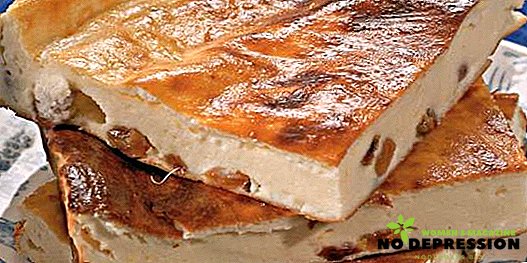Biochemical analysis of blood - one of the most popular methods of examination. If you correctly decipher the results, you can identify many pathologies in the early stages.
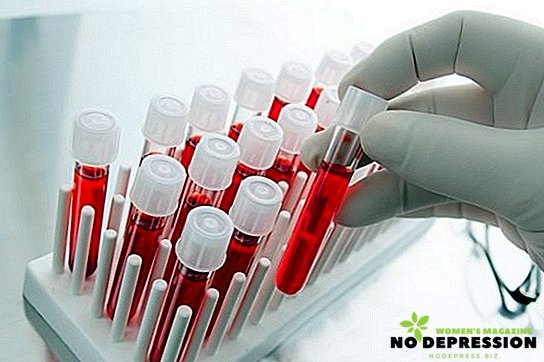
How to prepare for the analysis?
The nurse collects the patient's blood in just 2 minutes, and this procedure does not cause discomfort. But in order for the tests to be true, it is necessary to prepare for them and follow a number of simple requirements:
- blood is passed strictly on an empty stomach;
- dinner on the eve should not contain strong tea, coffee, and fatty foods and alcohol should not be consumed several days before the analysis;
- for a day should refrain from any thermal procedures, physical exertion;
- tests should be taken early in the morning;
- when the patient comes to the laboratory, it is advisable for him to sit for 10 minutes, take a deep breath, calm down;
- To determine the exact level of sugar in the blood, before passing the test, you do not need to brush your teeth, drink tea, or coffee;
- it is undesirable to take any hormonal preparations, antibiotics and other medicines before taking blood;
- 2 weeks before the test, stop drinking drugs that reduce the concentration of lipids in the blood.
Biochemical blood test: normal
The table shows the normal values of all parameters:
| Name, measure of measurement | Norm for women | Norm for men |
| Total protein, g / liter | 60-85 | |
| Albumins, g / l | 35-50 | |
| Fibrinogen, g / l | 2-4 | |
| Total bilirubin, mol / l | 8,5-20,5 | |
| Indirect bilirubin, mol / l | 1-8 | |
| Direct bilirubin, mol / l | 1-20 | |
| Aspartate aminotransferase, u / l | < 31 | < 41 |
| Alaninaminotransferase, u / l | < 35 | < 45 |
| (Gamma) -glutamine transferase, u / l | < 40 | < 55 |
| Alkaline phosphatase, u / l | 30-110 | |
| Triglycerides, mol / l | 0,4-1,8 | |
| Cholesterol, mol / l | 3,5-5,5 | |
| VP lipoproteins, mol / l | 1,7-3,5 | |
| Fibrinogen, g / l | until 6 | 2-4 |
| Amylase, u / l | 20-125 | |
| Uric acid, µmol / l | 150-350 | 210-420 |
| Creatinine, µmol / L | 55-95 | 62-120 |
| Urea, mol / l | 2,8-7,2 | |
| C-reactive protein, mg / l | < 0,5 | |
| Antistreptolysin Oh, u / l | < 200 | |
| Glucose, µmol / l | 3,8-6,3 | |
| Potassium, mmol / liter | 3,35-5,35 | |
| Sodium, mmol / liter | 130-155 | |
| Calcium, mmol / liter | 2,15-2,5 | |
| Magnesium, mmol / liter | 0,65-1 | |
Major showed blood biochemistry
According to the modified composition of the blood can be judged on the presence of pathology. Biochemical analysis, in contrast to the general clinical, will identify violations in the work of certain organs. In addition, biochemistry helps to establish whether the body has enough vitamins, trace elements, any other substances.
Squirrels
This group in blood biochemistry is represented by proteins, without which human life is impossible, as well as specific protein structures that may arise due to certain situations.
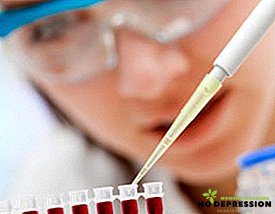 Total protein Changes in the level of total protein can indicate the development of pathological processes, including oncology, inflammation of internal organs, connective tissue. But it should also be remembered that a decrease in this substance may be the result of its insufficient supply with food.
Total protein Changes in the level of total protein can indicate the development of pathological processes, including oncology, inflammation of internal organs, connective tissue. But it should also be remembered that a decrease in this substance may be the result of its insufficient supply with food.- Often, together with the total protein, it also examines protein fractions, since a decrease or increase in the content of various types of proteins, a violation of the ratio between them can be a sign of many pathological conditions.
- Albumen. This is a protein that allows you to identify the pathology of the liver and kidneys: to diagnose rheumatism, the presence of tumors, to determine the effect of hormonal agents on the body.
- Myoglobin. This protein is used to identify pathological changes in the muscle of the heart, the skeleton. The reasons for the increase in this indicator may cause injuries, frequent seizures, and so on.
- Ferritin. This protein "collects" a reserve reserve of iron in the body. Its level is necessary for the study of diseases of various origins, as well as pathologies such as rheumatism, malignant neoplasms, and infections.
- Ceruloplasmin. A protein that transports copper ions. With an increase in the activity of the protein, one can speak of myocardial infarction, malignant neoplasms, and inflammatory processes.
- C-reactive protein. A specific protein that appears during the penetration of infectious agents, injuries, tuberculosis, oncology, meningitis, complications after surgery.
- Rheumatoid factor or a group of specific immunoglobulins that are synthesized in the body during the development of rheumatoid arthritis, in pathological conditions, such as tuberculosis, mononucleosis, hematological diseases. In rheumatoid arthritis, an increase in the activity of antistreptolysin is often observed.
Enzymes
Enzymes in biochemical analysis are usually represented by liver tests: ALT and AST, amylases, which markedly increase with problems with the pancreas. The list of enzymes that can tell about the state of the body is much more:
- ALT (alanine aminotransferase). Included in the above mentioned liver tests. It is an indicator of liver function, but it can also characterize other organs.
- AST (aspartate aminotransferase). In addition to liver disease, this enzyme can talk about cardiac pathology, infectious processes in the body.
- A-amylase and pancreatic amylase. These indicators most often indicate the presence of an inflammatory process in the pancreas, although their activity may increase in other cases: renal failure, intake of large doses of alcohol, the use of drugs of some pharmaceutical groups, such as salicylates and hormones.
- Creatine kinase. An enzyme that reflects energy metabolism in various tissues. Increasing its value allows both to diagnose myocardial infarction and determine its prognosis. This is very helpful for specialists to prescribe the correct treatment.
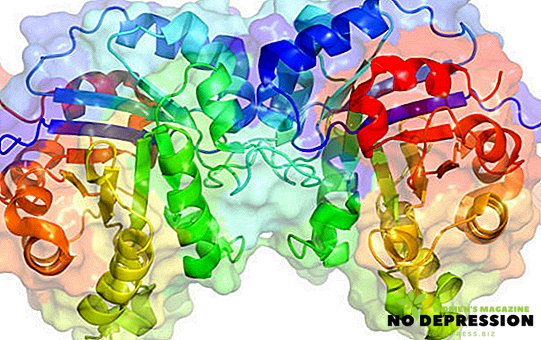
- LDH (lactate dehydrogenase). Intracellular substance, with an increase in the activity of which you can talk about: hepatitis, myocardial infarction, certain types of anemia. Also, a significant increase in this indicator is observed with the appearance of malignant tumors.
- Gamma-glutamyl transpeptidase. By determining the activity of this enzyme, it is possible to identify liver disease, inflammatory processes in the body, which occur without symptoms.
- Lipase. This enzyme is involved in the breakdown of neutral fats. An important role belongs to the pancreatic lipase, which is of great importance in gastroenterology, as it allows to identify diseases of the pancreas.
- Alkaline phosphatase. Helps to identify diseases of the skeletal system, biliary tract, liver.
- Phosphatase is acidic. An increase in the activity of this enzyme is observed with lesions of the prostate gland.
- Cholinesterase. The activity of this enzyme reflects the synthetic ability of the hepatic parenchyma. With a decrease in the activity of this enzyme can be said about the damage to the liver. Also, the enzyme activity is reduced in infarction, inflammatory processes in the kidneys, the appearance of malignant tumors.
Lipid spectrum
Diagnosis of diseases of the cardiovascular system is not always limited to the appointment of an analysis to determine cholesterol. To find out in what condition the vascular walls are, if there are signs of the development of IHD or myocardial infarction, do not do without the chemical test of the lipid spectrum. It includes:
- total cholesterol;
- low density lipoproteins and high density lipoproteins;
- triglycerides;
- atherogenic coefficient.
Carbohydrates
The most common analysis in the number of biochemistry is the analysis of the sugar or glucose content.
With the increase of this indicator can detect diabetes. However, there are a number of diseases that also lead to improved performance. These include injuries, burns, liver disease, pancreatic disease.
Pigments
Bilirubin is a breakdown product of red blood cells. Its increase may indicate different pathological conditions.
Diseases that are associated with an increase in a given substance may have various causes of origin. Therefore, the diagnosis is based on the ratio of the bilirubin fraction. Most often, this laboratory test will help diagnose abnormalities associated with damage to the liver and biliary tract.
Low molecular weight nitrogenous substances
Presented by the following indicators:
- Creatine It allows you to determine the status of organs, to talk about serious problems, such as tumors, diabetes, liver and kidney damage.
- Urea. Analysis of urea indicates problems in the kidneys. In addition, the study is often necessary to determine the function of the liver, heart, gastrointestinal tract.
Trace elements, acids, vitamins
In the LHC, it is often possible to meet tests that allow to determine the level of inorganic substances and organic compounds. These include:
- Calcium. It is an intracellular cation that concentrates in the skeletal system. With changes in the indicator, we can talk about diseases of the bones, thyroid, liver, and kidneys. Calcium also serves as an important diagnostic test for detecting diseases of the skeletal system in children.
- Sodium. Intracellular cation that transfers water. When changing the concentration of sodium can talk about serious pathological conditions.
- Potassium. Changes in the level of potassium in the direction of reduction can lead to a cardiac arrest in systole, upwards in diastole.
- Phosphorus. A chemical element that is strongly associated with calcium metabolism.
- Magnesium. A lack of magnesium can lead to a decrease in blood flow, the development of arterial hypertension. Its excess can cause heart block, coma.
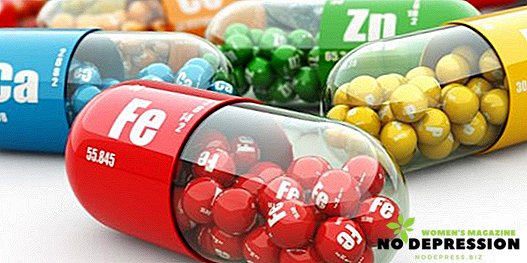
- Iron. It is the main component of hemoglobin.
- Zinc. With a lack of this component, growth and sexual development is delayed, the spleen and liver are enlarged.
- Vitamin B12.
- Ascorbic acid or vitamin C.
- Folic acid.
- Calcitriol (vitamin D). With its deficiency, bone formation is inhibited, and in children it can cause rickets.
The reasons for the increase and decrease of the main indicators
A decrease in total protein may occur when:
- protein starvation;
- increased protein excretion along with urine, which usually happens in case of kidney disease;
- due to blood loss, for example, with nosebleeds;
- with burns;
- with malignant tumors, for example, cancer of the stomach and bladder;
- in violation of the formation of protein, which happens with hepatitis and cirrhosis;
- with long-term treatment with glucocorticosteroids.
Reasons for increasing urea:
- crash syndrome;
- polycystic kidney disease;
- kidney tuberculosis;
- renal failure;
- pyelonephritis.
Causes of Creatine Reduction:
- hyperthyroidism;
- intestinal obstruction;
- extensive burns;
- muscular dystrophy.
Reasons for the increase in uric acid:
- gout;
- acute infection;
- liver disease;
- skin diseases;
- barbiturate poisoning.
The most common decrease indicates:
- polyuria;
- liver failure;
- fasting;
- hypothyroidism;
- metabolic deterioration.
Lack of glucose in the blood happens when:
- long fasting;
- hypothyroidism;
- insulin overdose;
- meningitis;
- insuloma;
- sarcoidosis;
- chronic liver diseases.
Excess glucose in the blood happens when:
- diabetes;
- pituitary tumors;
- tumors of the adrenal cortex;
- brain injuries and tumors;
- epilepsy;
- carbon monoxide poisoning.
Increasing total cholesterol can be when:
- diabetes;
- pregnancy;
- gallstone disease;
- pancreatitis;
- alcoholism;
- myocardial infarction;
- coronary heart disease;
- gallstone pathology.
Reasons for the decline:
- malignant tumors of the liver;
- cirrhosis;
- rheumatoid arthritis;
- starvation;
- chronic lung disease.


 Total protein Changes in the level of total protein can indicate the development of pathological processes, including oncology, inflammation of internal organs, connective tissue. But it should also be remembered that a decrease in this substance may be the result of its insufficient supply with food.
Total protein Changes in the level of total protein can indicate the development of pathological processes, including oncology, inflammation of internal organs, connective tissue. But it should also be remembered that a decrease in this substance may be the result of its insufficient supply with food.






